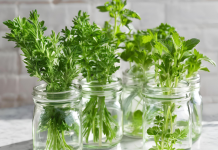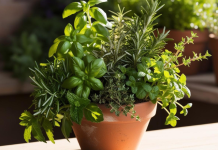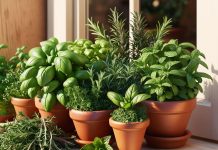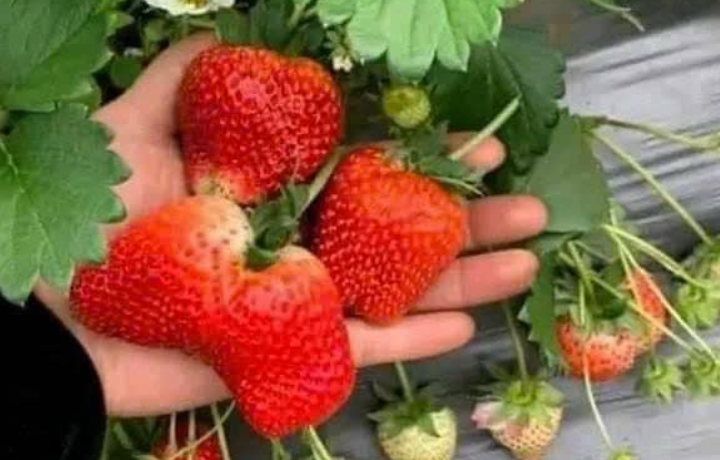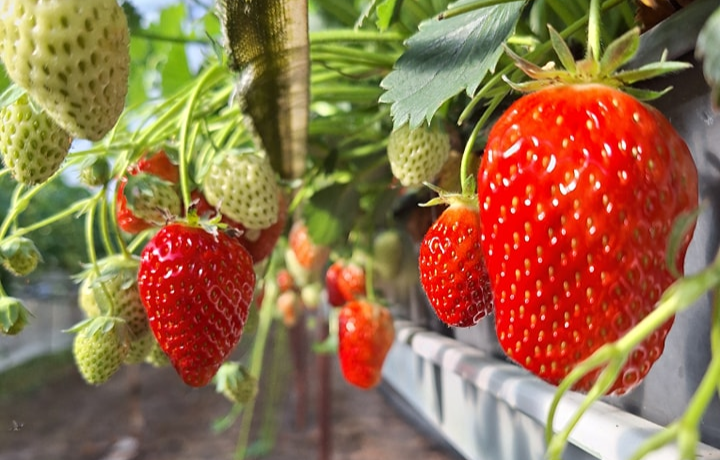Zinnias are vibrant, hardy, and easy-to-grow flowers that have become a favorite among gardeners of all skill levels. Whether you’re a beginner looking to add a splash of color to your garden or an experienced gardener seeking to expand your floral collection, zinnias are an excellent choice.
This in-depth guide will cover everything you need to know about growing zinnias, from selecting the right varieties to planting, care, and troubleshooting common problems.
What Makes Zinnias Unique and Why Are They So Popular?
Zinnias belong to the Asteraceae family, which includes daisies, sunflowers, and marigolds. Native to Mexico and the Southwestern United States, zinnias have been cultivated for centuries and are now grown worldwide. Their vibrant colors, long blooming season, and versatility make them a popular choice for gardens, borders, and even containers.
Zinnias are annuals, meaning they complete their life cycle in one growing season. They are known for their daisy-like flowers that come in a wide range of colors, including red, orange, pink, yellow, purple, and white. The flowers can be single, semi-double, or double, with varying petal shapes and sizes.
Recent Posts
- 8 Simple Steps to Grow Strawberries in Pots: A Comprehensive Guide
- Ultimate Guide to Growing Strawberries: From Planting to Harvest with Expert Tips
2. Choosing the Right Zinnia Varieties
There are over 20 species of zinnias, but the most commonly grown are Zinnia elegans, Zinnia angustifolia, and Zinnia haageana. Within these species, there are countless varieties to choose from, each with its own unique characteristics. When selecting zinnia varieties, consider factors such as flower size, color, height, and disease resistance.
Zinnia elegans: The most popular and widely cultivated species, Zinnia elegans, is known for its large, vibrant flowers that can reach up to 5 inches in diameter. This species includes both tall and dwarf varieties, making it suitable for various garden settings.
Zinnia angustifolia: Also known as narrow-leaf zinnia, Zinnia angustifolia is a more compact species with smaller flowers. It is highly drought-tolerant and disease-resistant, making it an excellent choice for hot, dry climates.
Zinnia haageana: Commonly known as Mexican zinnia, this species produces smaller, more compact flowers in warm colors like orange, red, and yellow. It is also highly resistant to powdery mildew, a common problem in zinnias.
Popular Varieties:
- Benary’s Giant: Known for its large, double blooms and strong stems, making it ideal for cut flowers.
- Profusion Series: A hybrid series that is compact, disease-resistant, and produces masses of small, daisy-like flowers.
- State Fair Mix: A mix of tall, large-flowered zinnias in a variety of colors, perfect for adding height to garden beds.
- Lilliput: A dwarf variety with small, pom-pom-like flowers, ideal for borders and containers.
3. Preparing the Soil and Site
Zinnias thrive in well-drained soil rich in organic matter. They prefer full sun, so choose a location that receives at least 6-8 hours of direct sunlight daily. Here are some steps to prepare the soil and site for zinnia planting:
3.1 Soil Preparation
- Soil Testing: Before planting, conduct a soil test to determine the pH and nutrient levels. Zinnias prefer slightly acidic to neutral soil with a pH of 5.5 to 7.5.
- Amending the Soil: If your soil is heavy clay or sandy, amend it with compost or well-rotted manure to improve drainage and fertility. Work the organic matter into the top 6-8 inches of soil.
- Fertilization: Zinnias are light feeders, but incorporating a balanced, slow-release fertilizer into the soil before planting can promote healthy growth and abundant blooms.
3.2 Site Selection - Sunlight: Choose a location with full sun exposure. Zinnias need plenty of sunlight to produce vibrant flowers and prevent disease.
- Air Circulation: Ensure good air circulation around the plants to reduce the risk of fungal diseases. Avoid overcrowding zinnias, as this can lead to poor airflow.
- Watering Considerations: While zinnias are relatively drought-tolerant, they still need consistent moisture, especially during dry periods. Consider the availability of water when selecting a site.
4. Planting Zinnias
Zinnias can be planted directly in the garden from seeds or started indoors and transplanted. Here’s how to do both:
4.1 Direct Sowing
When to Plant: Wait until all danger of frost has passed, and the soil has warmed to at least 70°F (21°C). Zinnias are frost-sensitive, so planting too early can damage the seeds or seedlings.
Seed Spacing: Sow seeds about ¼ inch deep and 6-12 inches apart, depending on the variety. For mass planting, you can broadcast seeds and thin them later to achieve the desired spacing.
Thinning: Once the seedlings are 2-3 inches tall, thin them to the recommended spacing. Crowded plants are more susceptible to disease and will produce fewer flowers.
4.2 Starting Indoors
- Timing: Start seeds indoors 4-6 weeks before the last expected frost date. This gives the seedlings a head start and ensures earlier blooms.
- Seedling Care: Keep the soil moist but not soggy, and place the trays in a warm, bright location. Once the seedlings have two sets of true leaves, they can be transplanted into individual pots.
- Hardening Off: Before transplanting outdoors, harden off the seedlings by gradually exposing them to outdoor conditions over a week. This reduces transplant shock and promotes stronger growth.
- Transplanting: Transplant seedlings into the garden after the last frost when they are about 4-6 inches tall. Space them according to the variety’s recommended spacing.
5. Caring for Zinnias
Zinnias are relatively low-maintenance, but a few key care practices can help them thrive.
5.1 Watering
- Frequency: Water zinnias deeply once or twice a week, depending on weather conditions. Avoid overhead watering, which can promote fungal diseases; instead, water at the base of the plants.
- Mulching: Apply a 2-3 inch layer of organic mulch around the plants to retain moisture, suppress weeds, and maintain soil temperature.
5.2 Fertilization
- Initial Feeding: If you amended the soil with compost or fertilizer before planting, additional feeding may not be necessary until mid-season.
- Mid-Season Boost: For continued flowering, apply a balanced, water-soluble fertilizer every 4-6 weeks during the growing season.
5.3 Deadheading and Pruning
- Deadheading: Regularly remove spent flowers to encourage continuous blooming.
- Deadheading also prevents the plants from diverting energy into seed production.
- Pruning: Pinch back the tips of young plants to encourage bushier growth and more flowers. Taller varieties may require staking to prevent them from toppling over.
6. Pests and Diseases
While zinnias are relatively resilient, they can be affected by pests and diseases. Identifying and addressing these issues early can prevent significant damage.
6.1 Common Pests
- Aphids: These small, sap-sucking insects can weaken plants and transmit diseases. Control aphids with insecticidal soap, neem oil, or by introducing beneficial insects like ladybugs.
- Spider Mites: These tiny pests can cause stippling and discoloration on leaves. Regularly spray the plants with water to reduce their numbers, or use insecticidal soap if the infestation is severe.
- Japanese Beetles: These beetles feed on the leaves and flowers, causing significant damage. Handpick beetles or use traps to control their population.
6.2 Common Diseases
- Powdery Mildew: This fungal disease appears as a white, powdery coating on the leaves. Prevent powdery mildew by ensuring good air circulation and avoiding overhead watering.
- Fungicides may be necessary if the infection is severe.
- Leaf Spot: Caused by various fungi, leaf spot results in brown or black spots on the leaves.
- Remove and destroy affected leaves, and apply a fungicide if necessary.
- Botrytis Blight: This fungal disease causes gray mold on flowers and leaves. Remove and dispose of infected plant parts, and improve air circulation around the plants.
7. Extending the Blooming Season
Zinnias typically bloom from late spring to the first frost. However, with proper care and planning, you can extend their blooming season and enjoy their colorful flowers for even longer.
7.1 Succession Planting
Planting in Stages: To ensure continuous blooms throughout the growing season, plant zinnias in stages, every 2-3 weeks. This way, as one batch of flowers fades, another will be ready to bloom.
Late-Season Planting: In warmer climates, you can plant a final batch of zinnias in mid to late summer for blooms that last into the fall.
7.2 Overwintering
Seed Saving: While zinnias are annuals and won’t survive winter, you can save seeds from your favorite plants to sow the following year. Allow the flowers to mature and dry on the plant, then harvest the seeds.
Indoor Blooming Although zinnias are typically grown outdoors, you can also grow them indoors in pots during the winter months. Choose dwarf or compact varieties that are better suited to indoor conditions. Provide ample light using grow lights or placing them near a south-facing window. Indoor zinnias may not bloom as profusely as those grown outdoors, but they can still add a splash of color to your indoor space during the colder months.
- Unraveling the Mystery of Free Energy Devices: A Critical Analysis
- Innovations in Renewable Energy Storage: Beyond Lithium Ion Batteries
8. Using Zinnias in Garden Design
Zinnias are incredibly versatile and can be used in a variety of garden designs, from formal beds to wildflower meadows. Their vibrant colors and different sizes allow them to fit into almost any garden aesthetic.
8.1 Borders and Edges
Tall Varieties for Backdrops: Use tall zinnia varieties like ‘Benary’s Giant’ or ‘State Fair Mix’ as backdrops in mixed borders. Their height and large flowers create a striking visual impact and help define garden spaces.
Dwarf Varieties for Edging: Compact zinnia varieties like the ‘Profusion Series’ or ‘Lilliput’ are perfect for edging pathways, garden beds, or even lining the edges of a vegetable garden. Their uniform growth and abundant blooms provide a neat, colorful border.
8.2 Mass Planting and Color Blocking
Color Blocking: For a bold, modern garden design, consider planting zinnias in large, single-color blocks. Grouping together masses of the same color creates a strong visual impact and can make a garden feel more cohesive.
Mass Planting: Zinnias are excellent for mass planting in larger spaces, such as open fields or large garden beds. Choose a mix of colors and heights to create a dynamic and eye-catching display that will attract pollinators.
8.3 Companion Planting
- Pollinator Attraction: Zinnias are excellent companion plants in vegetable gardens due to their ability to attract pollinators such as bees and butterflies. Planting zinnias near crops like cucumbers, squash, and melons can help improve pollination and increase yields.
- Beneficial Insects: Besides attracting pollinators, zinnias also draw in beneficial insects like ladybugs and parasitic wasps that help control pests in the garden. This makes them a valuable addition to any garden focused on organic and integrated pest management.
9. Zinnias as Cut Flowers
Zinnias are among the best flowers for cutting, thanks to their long stems, vibrant colors, and long-lasting blooms. Growing zinnias specifically for cut flowers can provide you with a constant supply of fresh bouquets throughout the growing season.
9.1 Selecting Varieties for Cutting
- Benary’s Giant: This variety is a favorite among flower farmers for its large, long-lasting blooms and sturdy stems. It’s perfect for creating show-stopping arrangements.
Oklahoma Series: Known for its double blooms and long stems, the Oklahoma Series offers a range of pastel colors that are ideal for more delicate bouquets. - Zinderella Series: This variety features unique, scabiosa-like flowers with frilly, central petals, adding texture and interest to floral arrangements.
9.2 Harvesting and Conditioning
- Timing: Harvest zinnias early in the morning or late in the evening when temperatures are cooler. Choose flowers that are fully open, as zinnias do not continue to open once cut.
- Conditioning: Immediately after cutting, place the stems in a bucket of cool water. Remove any leaves that would be submerged in water to prevent rot. Allow the flowers to condition in a cool, dark place for several hours before arranging them.
- Vase Life: Zinnias have a vase life of about 7-10 days, especially if the water is changed regularly, and a floral preservative is used. Cut stems at an angle to improve water uptake.
9.3 Designing with Zinnias
- Arrangements: Zinnias’ vibrant colors and variety of forms make them versatile in floral design. Pair them with other summer flowers like sunflowers, dahlias, or cosmos for a country-style bouquet, or mix them with greenery and filler flowers for a more sophisticated arrangement.
- Event Decorations: Due to their bold colors and sturdy nature, zinnias are perfect for event decorations, such as centerpieces for summer weddings or parties. Their long-lasting blooms ensure they’ll look fresh throughout the event.
10. Troubleshooting Common Problems
Even with the best care, zinnias can sometimes face challenges. Knowing how to identify and address common issues can help keep your plants healthy and thriving.
10.1 Leggy Growth
- Cause: Leggy zinnias with long, weak stems are usually a result of insufficient light, especially when started indoors.
- Solution: Ensure seedlings receive plenty of light, either by placing them in a bright window or using grow lights. When planting outdoors, choose a location with full sun and consider pinching back the plants to encourage bushier growth.
10.2 Poor Flowering
- Cause: Poor flowering can result from overcrowding, insufficient sunlight, or inadequate nutrients.
- Solution: Ensure proper spacing between plants to allow for good air circulation and adequate sunlight. Feed the plants with a balanced fertilizer to encourage more blooms.
- Regularly deadhead spent flowers to promote continuous blooming.
10.3 Yellowing Leaves
- Cause: Yellowing leaves can be a sign of overwatering, poor drainage, or nutrient deficiencies.
- Solution: Check the soil moisture and ensure it’s well-drained. If the soil is waterlogged, reduce watering and consider improving drainage by adding organic matter. If nutrient deficiency is suspected, apply a balanced fertilizer.
10.4 Powdery Mildew
- Cause: Powdery mildew is a common fungal disease that appears as a white, powdery coating on leaves and stems, usually in humid conditions.
- Solution: Improve air circulation by spacing plants properly and avoiding overhead watering. If powdery mildew appears, treat the plants with a fungicide and remove and destroy affected leaves.
- Instant Pot Beef Stew: A Flavorful and Easy Comfort Meal
- 10 Indoor Grow Tents: A Comprehensive Guide for Plant Enthusiasts
11. Advanced Techniques for Zinnia Cultivation
For gardeners looking to take their zinnia growing to the next level, advanced techniques such as selective breeding, saving seeds, and experimenting with different growing conditions can offer new challenges and rewards.
11.1 Selective Breeding
- Creating Your Own Hybrids: If you enjoy experimenting, try cross-pollinating different zinnia varieties to create your own hybrids. Choose parent plants with desirable traits, such as color, flower size, or disease resistance. Use a small brush to transfer pollen from one flower to another, and then collect and plant the seeds from the resulting flowers.
- Stabilizing Varieties: To stabilize a hybrid variety and ensure it produces consistent offspring, grow several generations of plants, selecting and saving seeds from the best specimens each year.
11.2 Saving Seeds
Seed Collection: Allow flowers to fully mature and dry on the plant before harvesting seeds. Once the flower heads are completely dry and brown, remove them from the plant and gently break them apart to collect the seeds.
Seed Storage: Store zinnia seeds in a cool, dry place in an airtight container. Properly stored seeds can remain viable for several years.
Seed Viability: Test the viability of stored seeds by placing a few on a damp paper towel, covering them with another towel, and keeping them moist and warm. If they sprout within a week, the seeds are still good to plant.
11.3 Experimenting with Growing Conditions
- Soil Types: Try growing zinnias in different soil types to see how they affect plant growth and flower quality. While zinnias prefer well-drained, fertile soil, they can adapt to various conditions with proper care.
- Climate Adaptation: If you live in an area with extreme weather conditions, such as intense heat or humidity, experiment with different zinnia varieties to find those best suited to your climate. Some varieties, like Zinnia angustifolia, are more tolerant of harsh conditions and may perform better in challenging environments.
- Container Gardening: Zinnias can also be grown successfully in containers, allowing you to experiment with different soil mixes, watering schedules, and fertilization regimes. Use a large container with good drainage and select dwarf or compact varieties for the best results.
12. Zinnias in History and Culture
Zinnias have a rich history and cultural significance, particularly in their native region of Mexico. Understanding the cultural background of zinnias can deepen your appreciation for these vibrant flowers.
12.1 Historical Background
Origin: Zinnias were first discovered in Mexico in the 16th century and were initially considered unattractive. It wasn’t until the 18th century that European botanists began cultivating zinnias, selecting for their bright colors and improved flower forms.
Introduction to Europe: The first zinnias introduced to Europe were described as “poor quality” and were nicknamed “everybody’s flower” because they were so easy to grow. However, through selective breeding, they eventually became one of the most popular garden flowers in Europe and America.
12.2 Cultural Significance
Symbolism: In the language of flowers, zinnias represent thoughts of absent friends, constancy, and lasting affection. They are often used in bouquets to convey these sentiments.
Use in Festivals: In Mexico, zinnias are sometimes used in Day of the Dead (Día de los Muertos) celebrations, where they are included in ofrendas (altars) and graveside decorations to honor deceased loved ones.
Art and Literature: Zinnias have been depicted in various works of art and literature, often symbolizing endurance and strong moral character due to their ability to thrive in difficult conditions.
Conclusion
Zinnias are a gardener’s delight, offering a kaleidoscope of colors, ease of growth, and versatility in both garden design and floral arrangements. Whether you’re growing them for their stunning visual appeal, their usefulness as cut flowers, or their ability to attract pollinators, zinnias are sure to bring joy and vibrancy to your garden. With proper care and a little bit of attention, you can enjoy these hardy, cheerful flowers from spring until the first frost.
Whether you’re a novice gardener just starting or an experienced horticulturist looking to experiment, zinnias provide endless opportunities for creativity and enjoyment. So grab some seeds, prepare your garden, and get ready to experience the beauty and charm of zinnia flowers in full bloom.


